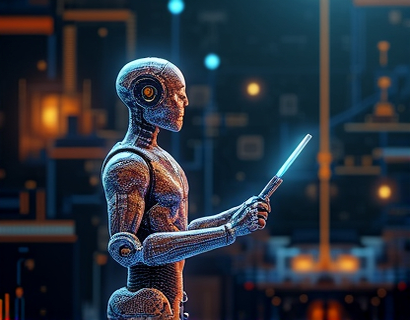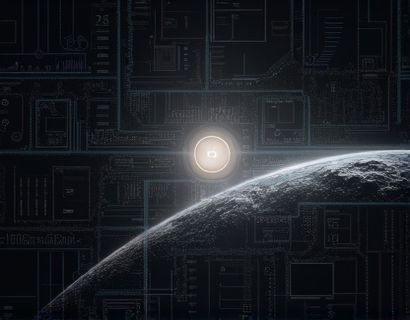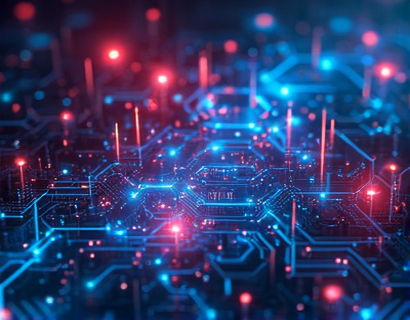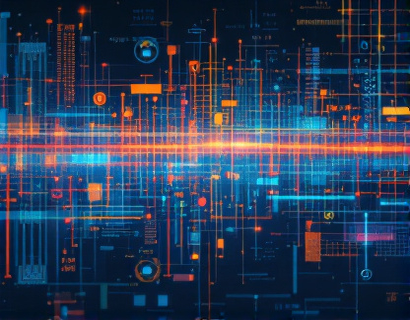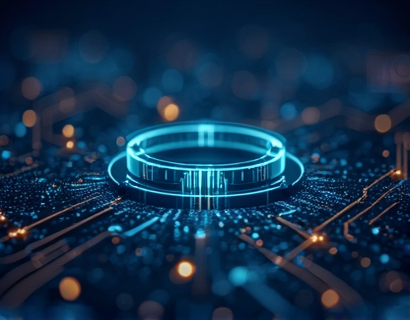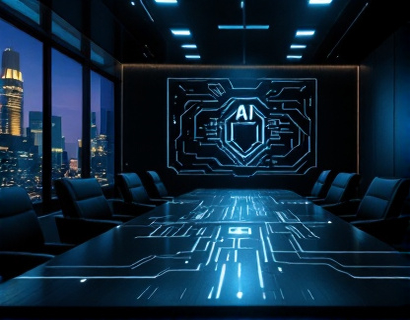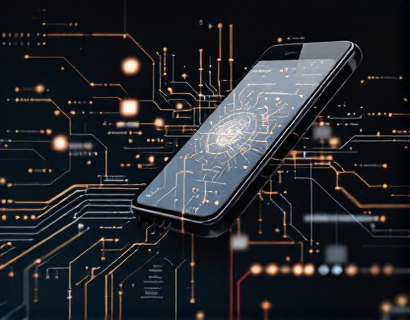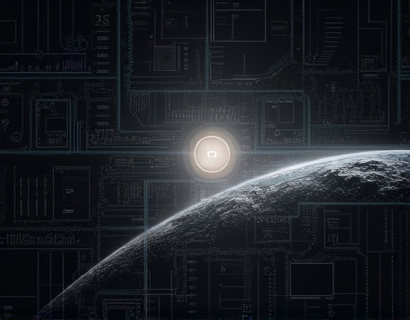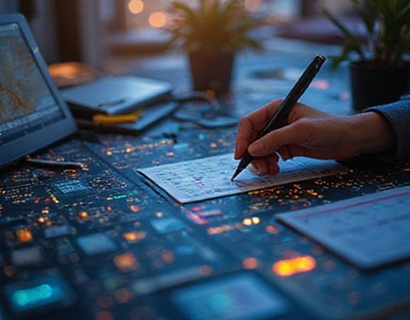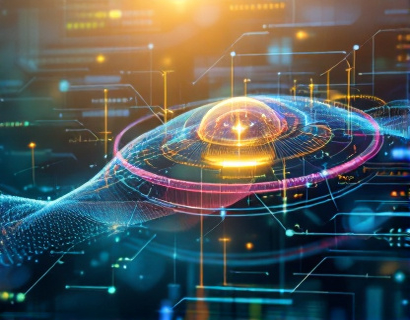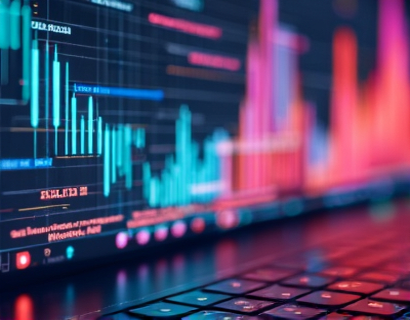Unleashing the Next Generation of Digital Transformation: The Synergy of Crypto and AI
The intersection of cryptocurrency and artificial intelligence (AI) is giving birth to a new era of digital transformation, one that promises to redefine how we interact with technology, enhance security, and streamline processes. This convergence is not just a technological curiosity but a powerful force that is reshaping industries and creating unprecedented opportunities. As we delve into this topic, we will explore the synergistic potential of these two revolutionary technologies and how they are paving the way for advanced app solutions that are more efficient, secure, and user-friendly.
The Foundations of Cryptocurrency and AI
To understand the transformative power of merging cryptocurrency and AI, it's essential to first grasp the fundamentals of each technology. Cryptocurrency, since its inception with Bitcoin in 2009, has introduced a decentralized and secure method of conducting financial transactions without the need for intermediaries like banks. The underlying technology, blockchain, ensures transparency, immutability, and security through a distributed ledger system.
Artificial intelligence, on the other hand, involves the simulation of human intelligence processes by machines, particularly computer systems. These processes include learning (the acquisition of information and rules for using it), reasoning (using rules to reach approximate or definite conclusions), and self-correction. AI has evolved significantly, from rule-based systems to machine learning and deep learning, enabling machines to perform tasks that traditionally required human intervention.
Enhancing Security with Crypto and AI
One of the most significant benefits of combining cryptocurrency and AI is the enhancement of security measures. Blockchain's inherent security features, such as cryptographic hashing and consensus mechanisms, provide a robust framework for protecting data. AI can further bolster these security measures by detecting and mitigating threats in real-time. Machine learning algorithms can analyze patterns and anomalies in transaction data, identifying potential fraud or malicious activities before they cause harm.
For instance, AI-driven security systems can monitor blockchain networks continuously, learning from past attacks and adapting to new threats. This proactive approach not only strengthens the security of cryptocurrency transactions but also extends to other areas such as identity verification and data protection. The integration of AI in cybersecurity for blockchain-based systems ensures a more resilient and secure digital environment.
Optimizing User Experiences through AI
The user experience (UX) is a critical factor in the success of any digital application. AI plays a pivotal role in enhancing UX by providing personalized and intuitive interactions. In the context of cryptocurrency and blockchain applications, AI can analyze user behavior and preferences to offer tailored services. For example, a crypto wallet app powered by AI can suggest optimal times for transactions based on market trends, or recommend wallet settings that align with the user's risk tolerance and financial goals.
Moreover, natural language processing (NLP), a subset of AI, can enable more natural and efficient communication between users and applications. Chatbots and virtual assistants can handle customer support, answer queries, and guide users through complex processes, all while providing a seamless and user-friendly experience. This level of personalization and convenience is a game-changer in the realm of digital finance and beyond.
Efficiency and Automation in Crypto and AI
Efficiency is another area where the combination of cryptocurrency and AI shines. Automation, driven by AI, can streamline various processes within blockchain ecosystems, reducing manual intervention and increasing operational efficiency. Smart contracts, self-executing contracts with the terms directly written into code, are a prime example. AI can optimize the execution of smart contracts by analyzing conditions and ensuring that all parameters are met accurately and promptly.
Additionally, AI can manage and optimize resource allocation in decentralized networks, ensuring that computational power and energy are used efficiently. This is particularly important for blockchain networks that rely on consensus mechanisms like Proof of Work, which can be energy-intensive. AI algorithms can predict and adjust resource usage based on network demand, thereby reducing waste and lowering costs.
Innovative Applications and Use Cases
The synergy of cryptocurrency and AI is giving rise to a multitude of innovative applications across various industries. In finance, AI-driven trading bots can analyze vast amounts of data to make informed investment decisions in cryptocurrency markets. These bots can identify trends, predict price movements, and execute trades with minimal human intervention, enhancing the efficiency and profitability of crypto investments.
In the realm of supply chain management, blockchain and AI can work together to create transparent and traceable systems. AI can track and analyze data from various points in the supply chain, ensuring that products are authentic and have not been tampered with. This not only enhances security but also builds trust among consumers and businesses. For instance, a food supply chain can use AI to monitor the origin, quality, and movement of products, ensuring safety and compliance with regulations.
Healthcare is another sector that stands to benefit significantly. AI-powered diagnostic tools can analyze medical data stored on blockchain platforms to provide accurate and timely diagnoses. This integration ensures that patient data is secure and privacy is maintained, while AI enhances the accuracy and speed of medical assessments. Additionally, AI can optimize the distribution of medical supplies and resources, ensuring that they reach where they are needed most, especially in crisis situations.
Challenges and Considerations
While the potential of merging cryptocurrency and AI is vast, there are several challenges and considerations that must be addressed. One of the primary concerns is the regulatory landscape. As both technologies operate in a relatively uncharted legal territory, navigating regulations can be complex. Ensuring compliance with existing laws while advocating for supportive frameworks is crucial for the sustainable growth of these technologies.
Another challenge is the technical complexity involved in integrating AI with blockchain systems. Developing robust and scalable solutions requires expertise in both domains, and there is a need for more interdisciplinary collaboration. Additionally, the energy consumption associated with blockchain, particularly Proof of Work systems, remains a significant environmental concern. Exploring more sustainable consensus mechanisms and leveraging AI to optimize energy usage can help mitigate this issue.
The Future of Digital Transformation
The future of digital transformation is intrinsically linked to the continued evolution of cryptocurrency and AI. As these technologies mature, we can expect to see even more innovative applications and use cases that push the boundaries of what is possible. The convergence of these fields will not only enhance existing processes but also create entirely new paradigms in areas such as decentralized finance (DeFi), non-fungible tokens (NFTs), and digital identity management.
For tech enthusiasts and professionals, the intersection of cryptocurrency and AI represents a fertile ground for exploration and innovation. The potential for creating advanced app solutions that are more secure, efficient, and user-friendly is immense. By staying at the forefront of these developments, individuals and organizations can position themselves to lead the next wave of digital transformation.
In conclusion, the merging of cryptocurrency and AI is not just a technological trend but a transformative force that is reshaping the digital landscape. As we continue to unlock the synergistic potential of these technologies, we pave the way for a more connected, secure, and innovative future. The journey ahead is exciting, and the possibilities are limitless.






